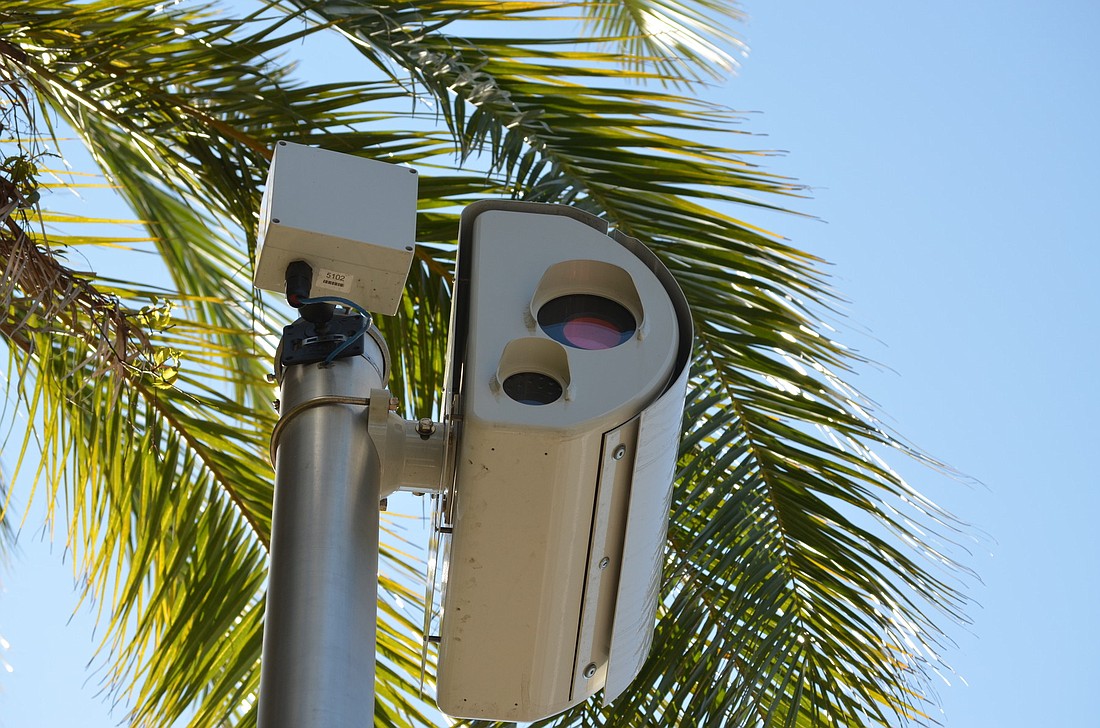- April 18, 2024
-
-
Loading

Loading

Sarasota Police officer John Lake has a simple metric for determining the effectiveness of the city’s red-light cameras.
“If you went out there, and you happened to do a study, and you asked 10 people if they happened to pay more attention to red lights in the city of Sarasota because of the cameras, all of them would say yes,” Lake said.
Although Lake said the city is pleased with the program to date, he said there’s no plan to add more cameras at this time. The city installed cameras in two phases — 10 beginning in December 2011 and another 10 earlier this year. The city chose the intersections it determined to be the most dangerous to house the cameras.
Two cameras in particular are generating a high rate of violations — those tracking cars headed northbound on Tamiami Trail at University Parkway and westbound on Bee Ridge Road at Tamiami — due to a failure to comply with no-turn-on-red regulations. The city has posted an additional sign at Tamiami and University to try to prevent motorists from making illegal turns.
A new state law, which went into effect July 1, will impact the appeals process. Before, if a ticket wasn’t responded to within 30 days, it became a uniform traffic citation and the fine increased to $264. Those who receive tickets now have 60 days to pay or dispute tickets, and appeals will be handled by a city-appointed magistrate rather than a court. Lake said enforcement procedures will remain the same.
Lake said people with concerns about the cameras mistakenly flagging them for a violation should rest easy.
Two people with American Traffic Solutions, the vendor that provides the camera, review all potential violations before they are sent back to the city, where police review them an additional time.

As a result, for example, the majority of violations triggered when someone makes a right turn on red without coming to a complete stop are being thrown out.
“If you make a right turn on red where it’s legal, you don’t need to come to a complete stop as long as you make the turn in a safe and prudent manner,” Lake said. “99% of the drivers are doing it in a safe and prudent manner.”
The city submits a study to the state at the end of each year regarding the effectiveness of the cameras. Although it’s too early to know the absolute effectiveness of the program with all 20 cameras in place, last year’s study saw a 14% reduction in accidents at intersections where the cameras were installed.
Still, Lake knows there’s a common perception that the city has installed the cameras just to make money.
“If you don’t want the city benefiting from it, you stop at a red light,” Lake said. “If you stop at a red light, the city can’t profit off of you.”
Contact David Conway at [email protected].
Click here to see a breakdown of red-light camera numbers.